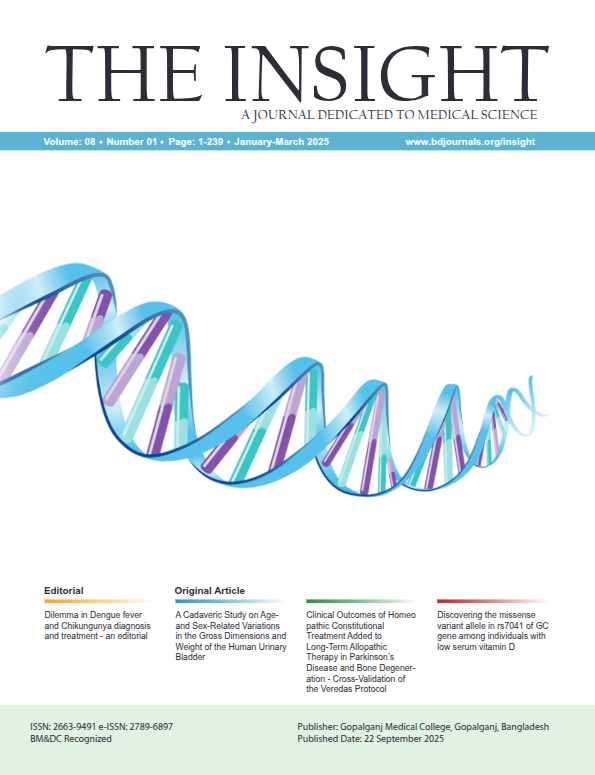Abstract
Background: Acne vulgaris is a common dermatological condition frequently encountered in women of reproductive age. Emerging evidence suggests a significant association between persistent acne and polycystic ovary syndrome (PCOS), a complex endocrine disorder characterized by hyperandrogenism, menstrual irregularities, and metabolic disturbances. Early identification of PCOS among acne patients is critical for timely management and prevention of long-term complications. Aim of the study: To determine the frequency of PCOS among women presenting with acne vulgaris and to evaluate the associated clinical and anthropometric characteristics. Methods & Materials: This hospital-based, cross-sectional study included 136 women diagnosed with acne vulgaris attending the outpatient Dermatology and Venereology department of Combined Military Hospital, Dhaka, between December 2022 and May 2023. Socio-demographic data, clinical presentations, menstrual history, and anthropometric measurements were recorded. PCOS diagnosis was based on clinical criteria including hyperandrogenic features and menstrual disturbances. Statistical analyses compared clinical parameters between acne patients with and without PCOS. Result: The prevalence of PCOS among acne patients was 36.8%. Women with PCOS showed significantly higher frequencies of hirsutism (88.0% vs. 3.49%, p < 0.001), alopecia (38.0% vs. 8.14%, p < 0.001), obesity (42.0% vs. 10.47%, p < 0.001), acanthosis nigricans (66.0% vs. 9.30%, p < 0.001), and menstrual disturbances (62.0% vs. 11.63%, p < 0.001) compared to non-PCOS acne patients. Seborrhea was more common in PCOS patients but did not reach statistical significance (58.0% vs. 41.86%, p = 0.069). The mean BMI was significantly higher in the PCOS group. Conclusion: The present study demonstrates a high prevalence of PCOS among women with acne vulgaris, particularly in those exhibiting hyperandrogenic and metabolic features. These findings emphasize the importance of routine PCOS screening in dermatological practice to enable early diagnosis and multidisciplinary care.

This work is licensed under a Creative Commons Attribution 4.0 International License.
Copyright (c) 2025 The Insight





 PDF
PDF